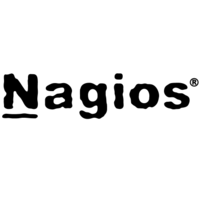What is Metricbeat and what are its top alternatives?
Top Alternatives to Metricbeat
 Prometheus
PrometheusPrometheus is a systems and service monitoring system. It collects metrics from configured targets at given intervals, evaluates rule expressions, displays the results, and can trigger alerts if some condition is observed to be true. ...
 Telegraf
TelegrafIt is an agent for collecting, processing, aggregating, and writing metrics. Design goals are to have a minimal memory footprint with a plugin system so that developers in the community can easily add support for collecting metrics. ...
 Filebeat
FilebeatIt helps you keep the simple things simple by offering a lightweight way to forward and centralize logs and files. ...
 collectd
collectdcollectd gathers statistics about the system it is running on and stores this information. Those statistics can then be used to find current performance bottlenecks (i.e. performance analysis) and predict future system load (i.e. capacity planning). Or if you just want pretty graphs of your private server and are fed up with some homegrown solution you're at the right place, too. ...
 Fluentd
FluentdFluentd collects events from various data sources and writes them to files, RDBMS, NoSQL, IaaS, SaaS, Hadoop and so on. Fluentd helps you unify your logging infrastructure. ...
 Logstash
LogstashLogstash is a tool for managing events and logs. You can use it to collect logs, parse them, and store them for later use (like, for searching). If you store them in Elasticsearch, you can view and analyze them with Kibana. ...
 Packetbeat
PacketbeatPacketbeat agents sniff the traffic between your application processes, parse on the fly protocols like HTTP, MySQL, Postgresql or REDIS and correlate the messages into transactions. ...
 Kibana
KibanaKibana is an open source (Apache Licensed), browser based analytics and search dashboard for Elasticsearch. Kibana is a snap to setup and start using. Kibana strives to be easy to get started with, while also being flexible and powerful, just like Elasticsearch. ...
Metricbeat alternatives & related posts
Prometheus
- Powerful easy to use monitoring47
- Flexible query language38
- Dimensional data model32
- Alerts27
- Active and responsive community23
- Extensive integrations22
- Easy to setup19
- Beautiful Model and Query language12
- Easy to extend7
- Nice6
- Written in Go3
- Good for experimentation2
- Easy for monitoring1
- Just for metrics12
- Bad UI6
- Needs monitoring to access metrics endpoints6
- Not easy to configure and use4
- Supports only active agents3
- Written in Go2
- TLS is quite difficult to understand2
- Requires multiple applications and tools2
- Single point of failure1
related Prometheus posts
Why we spent several years building an open source, large-scale metrics alerting system, M3, built for Prometheus:
By late 2014, all services, infrastructure, and servers at Uber emitted metrics to a Graphite stack that stored them using the Whisper file format in a sharded Carbon cluster. We used Grafana for dashboarding and Nagios for alerting, issuing Graphite threshold checks via source-controlled scripts. While this worked for a while, expanding the Carbon cluster required a manual resharding process and, due to lack of replication, any single node’s disk failure caused permanent loss of its associated metrics. In short, this solution was not able to meet our needs as the company continued to grow.
To ensure the scalability of Uber’s metrics backend, we decided to build out a system that provided fault tolerant metrics ingestion, storage, and querying as a managed platform...
(GitHub : https://github.com/m3db/m3)
Grafana and Prometheus together, running on Kubernetes , is a powerful combination. These tools are cloud-native and offer a large community and easy integrations. At PayIt we're using exporting Java application metrics using a Dropwizard metrics exporter, and our Node.js services now use the prom-client npm library to serve metrics.
- One agent can work as multiple exporter with min hndlng5
- Cohesioned stack for monitoring5
- Open Source2
- Metrics2
- Supports custom plugins in any language1
- Many hundreds of plugins1
related Telegraf posts
related Filebeat posts
- Open Source2
- Modular, plugins2
- KISS1
related collectd posts
We use collectd because of it's low footprint and great capabilities. We use it to monitor our Google Compute Engine machines. More interestingly we setup collectd as StatsD replacement - all our Clojure services push application-level metrics using our own metrics library and collectd pushes them to Stackdriver
- Open-source11
- Great for Kubernetes node container log forwarding9
- Lightweight9
- Easy8
related Fluentd posts
- Free69
- Easy but powerful filtering18
- Scalable12
- Kibana provides machine learning based analytics to log2
- Great to meet GDPR goals1
- Well Documented1
- Memory-intensive4
- Documentation difficult to use1
related Logstash posts
Often enough I have to explain my way of going about setting up a CI/CD pipeline with multiple deployment platforms. Since I am a bit tired of yapping the same every single time, I've decided to write it up and share with the world this way, and send people to read it instead ;). I will explain it on "live-example" of how the Rome got built, basing that current methodology exists only of readme.md and wishes of good luck (as it usually is ;)).
It always starts with an app, whatever it may be and reading the readmes available while Vagrant and VirtualBox is installing and updating. Following that is the first hurdle to go over - convert all the instruction/scripts into Ansible playbook(s), and only stopping when doing a clear vagrant up or vagrant reload we will have a fully working environment. As our Vagrant environment is now functional, it's time to break it! This is the moment to look for how things can be done better (too rigid/too lose versioning? Sloppy environment setup?) and replace them with the right way to do stuff, one that won't bite us in the backside. This is the point, and the best opportunity, to upcycle the existing way of doing dev environment to produce a proper, production-grade product.
I should probably digress here for a moment and explain why. I firmly believe that the way you deploy production is the same way you should deploy develop, shy of few debugging-friendly setting. This way you avoid the discrepancy between how production work vs how development works, which almost always causes major pains in the back of the neck, and with use of proper tools should mean no more work for the developers. That's why we start with Vagrant as developer boxes should be as easy as vagrant up, but the meat of our product lies in Ansible which will do meat of the work and can be applied to almost anything: AWS, bare metal, docker, LXC, in open net, behind vpn - you name it.
We must also give proper consideration to monitoring and logging hoovering at this point. My generic answer here is to grab Elasticsearch, Kibana, and Logstash. While for different use cases there may be better solutions, this one is well battle-tested, performs reasonably and is very easy to scale both vertically (within some limits) and horizontally. Logstash rules are easy to write and are well supported in maintenance through Ansible, which as I've mentioned earlier, are at the very core of things, and creating triggers/reports and alerts based on Elastic and Kibana is generally a breeze, including some quite complex aggregations.
If we are happy with the state of the Ansible it's time to move on and put all those roles and playbooks to work. Namely, we need something to manage our CI/CD pipelines. For me, the choice is obvious: TeamCity. It's modern, robust and unlike most of the light-weight alternatives, it's transparent. What I mean by that is that it doesn't tell you how to do things, doesn't limit your ways to deploy, or test, or package for that matter. Instead, it provides a developer-friendly and rich playground for your pipelines. You can do most the same with Jenkins, but it has a quite dated look and feel to it, while also missing some key functionality that must be brought in via plugins (like quality REST API which comes built-in with TeamCity). It also comes with all the common-handy plugins like Slack or Apache Maven integration.
The exact flow between CI and CD varies too greatly from one application to another to describe, so I will outline a few rules that guide me in it: 1. Make build steps as small as possible. This way when something breaks, we know exactly where, without needing to dig and root around. 2. All security credentials besides development environment must be sources from individual Vault instances. Keys to those containers should exist only on the CI/CD box and accessible by a few people (the less the better). This is pretty self-explanatory, as anything besides dev may contain sensitive data and, at times, be public-facing. Because of that appropriate security must be present. TeamCity shines in this department with excellent secrets-management. 3. Every part of the build chain shall consume and produce artifacts. If it creates nothing, it likely shouldn't be its own build. This way if any issue shows up with any environment or version, all developer has to do it is grab appropriate artifacts to reproduce the issue locally. 4. Deployment builds should be directly tied to specific Git branches/tags. This enables much easier tracking of what caused an issue, including automated identifying and tagging the author (nothing like automated regression testing!).
Speaking of deployments, I generally try to keep it simple but also with a close eye on the wallet. Because of that, I am more than happy with AWS or another cloud provider, but also constantly peeking at the loads and do we get the value of what we are paying for. Often enough the pattern of use is not constantly erratic, but rather has a firm baseline which could be migrated away from the cloud and into bare metal boxes. That is another part where this approach strongly triumphs over the common Docker and CircleCI setup, where you are very much tied in to use cloud providers and getting out is expensive. Here to embrace bare-metal hosting all you need is a help of some container-based self-hosting software, my personal preference is with Proxmox and LXC. Following that all you must write are ansible scripts to manage hardware of Proxmox, similar way as you do for Amazon EC2 (ansible supports both greatly) and you are good to go. One does not exclude another, quite the opposite, as they can live in great synergy and cut your costs dramatically (the heavier your base load, the bigger the savings) while providing production-grade resiliency.
Hi everyone. I'm trying to create my personal syslog monitoring.
To get the logs, I have uncertainty to choose the way: 1.1 Use Logstash like a TCP server. 1.2 Implement a Go TCP server.
To store and plot data. 2.1 Use Elasticsearch tools. 2.2 Use InfluxDB and Grafana.
I would like to know... Which is a cheaper and scalable solution?
Or even if there is a better way to do it.
- Easy setup2
- Works well with ELK stack2
related Packetbeat posts
- Easy to setup88
- Free64
- Can search text45
- Has pie chart21
- X-axis is not restricted to timestamp13
- Easy queries and is a good way to view logs9
- Supports Plugins6
- Dev Tools4
- Can build dashboards3
- More "user-friendly"3
- Out-of-Box Dashboards/Analytics for Metrics/Heartbeat2
- Easy to drill-down2
- Up and running1
- Unintuituve6
- Elasticsearch is huge4
- Hardweight UI3
- Works on top of elastic only3
related Kibana posts
Often enough I have to explain my way of going about setting up a CI/CD pipeline with multiple deployment platforms. Since I am a bit tired of yapping the same every single time, I've decided to write it up and share with the world this way, and send people to read it instead ;). I will explain it on "live-example" of how the Rome got built, basing that current methodology exists only of readme.md and wishes of good luck (as it usually is ;)).
It always starts with an app, whatever it may be and reading the readmes available while Vagrant and VirtualBox is installing and updating. Following that is the first hurdle to go over - convert all the instruction/scripts into Ansible playbook(s), and only stopping when doing a clear vagrant up or vagrant reload we will have a fully working environment. As our Vagrant environment is now functional, it's time to break it! This is the moment to look for how things can be done better (too rigid/too lose versioning? Sloppy environment setup?) and replace them with the right way to do stuff, one that won't bite us in the backside. This is the point, and the best opportunity, to upcycle the existing way of doing dev environment to produce a proper, production-grade product.
I should probably digress here for a moment and explain why. I firmly believe that the way you deploy production is the same way you should deploy develop, shy of few debugging-friendly setting. This way you avoid the discrepancy between how production work vs how development works, which almost always causes major pains in the back of the neck, and with use of proper tools should mean no more work for the developers. That's why we start with Vagrant as developer boxes should be as easy as vagrant up, but the meat of our product lies in Ansible which will do meat of the work and can be applied to almost anything: AWS, bare metal, docker, LXC, in open net, behind vpn - you name it.
We must also give proper consideration to monitoring and logging hoovering at this point. My generic answer here is to grab Elasticsearch, Kibana, and Logstash. While for different use cases there may be better solutions, this one is well battle-tested, performs reasonably and is very easy to scale both vertically (within some limits) and horizontally. Logstash rules are easy to write and are well supported in maintenance through Ansible, which as I've mentioned earlier, are at the very core of things, and creating triggers/reports and alerts based on Elastic and Kibana is generally a breeze, including some quite complex aggregations.
If we are happy with the state of the Ansible it's time to move on and put all those roles and playbooks to work. Namely, we need something to manage our CI/CD pipelines. For me, the choice is obvious: TeamCity. It's modern, robust and unlike most of the light-weight alternatives, it's transparent. What I mean by that is that it doesn't tell you how to do things, doesn't limit your ways to deploy, or test, or package for that matter. Instead, it provides a developer-friendly and rich playground for your pipelines. You can do most the same with Jenkins, but it has a quite dated look and feel to it, while also missing some key functionality that must be brought in via plugins (like quality REST API which comes built-in with TeamCity). It also comes with all the common-handy plugins like Slack or Apache Maven integration.
The exact flow between CI and CD varies too greatly from one application to another to describe, so I will outline a few rules that guide me in it: 1. Make build steps as small as possible. This way when something breaks, we know exactly where, without needing to dig and root around. 2. All security credentials besides development environment must be sources from individual Vault instances. Keys to those containers should exist only on the CI/CD box and accessible by a few people (the less the better). This is pretty self-explanatory, as anything besides dev may contain sensitive data and, at times, be public-facing. Because of that appropriate security must be present. TeamCity shines in this department with excellent secrets-management. 3. Every part of the build chain shall consume and produce artifacts. If it creates nothing, it likely shouldn't be its own build. This way if any issue shows up with any environment or version, all developer has to do it is grab appropriate artifacts to reproduce the issue locally. 4. Deployment builds should be directly tied to specific Git branches/tags. This enables much easier tracking of what caused an issue, including automated identifying and tagging the author (nothing like automated regression testing!).
Speaking of deployments, I generally try to keep it simple but also with a close eye on the wallet. Because of that, I am more than happy with AWS or another cloud provider, but also constantly peeking at the loads and do we get the value of what we are paying for. Often enough the pattern of use is not constantly erratic, but rather has a firm baseline which could be migrated away from the cloud and into bare metal boxes. That is another part where this approach strongly triumphs over the common Docker and CircleCI setup, where you are very much tied in to use cloud providers and getting out is expensive. Here to embrace bare-metal hosting all you need is a help of some container-based self-hosting software, my personal preference is with Proxmox and LXC. Following that all you must write are ansible scripts to manage hardware of Proxmox, similar way as you do for Amazon EC2 (ansible supports both greatly) and you are good to go. One does not exclude another, quite the opposite, as they can live in great synergy and cut your costs dramatically (the heavier your base load, the bigger the savings) while providing production-grade resiliency.
This is my stack in Application & Data
JavaScript PHP HTML5 jQuery Redis Amazon EC2 Ubuntu Sass Vue.js Firebase Laravel Lumen Amazon RDS GraphQL MariaDB
My Utilities Tools
Google Analytics Postman Elasticsearch
My Devops Tools
Git GitHub GitLab npm Visual Studio Code Kibana Sentry BrowserStack
My Business Tools
Slack




























